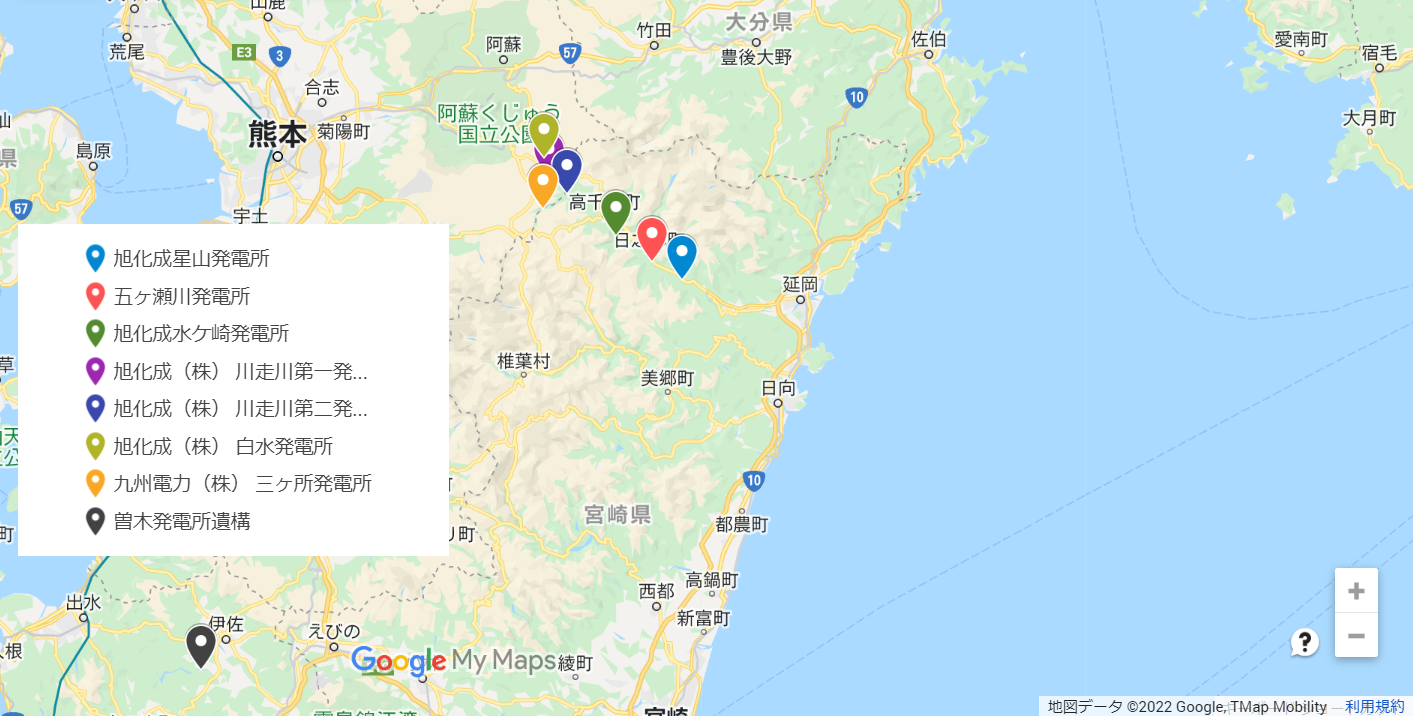100 Stories1925, the Story Behind the Birth of Asahi Kasei Through the Hydroelectric Plant
This is an untold story about the birth of Asahi Kasei surrounding Shitagau Noguchi, founder of Asahi Kasei, and Nobeoka, its birthplace. This one event is linked to the establishment of Asahi Kasei.
The time is 100 years ago. Electric power development took place in Hyuga Province, Nobeoka. Fascinated by the abundance of water and electricity in Nobeoka, Shitagau Noguchi played a leading role in this project. At the time, the method of electric power development was generating electricity at the river upstream and establishing an electricity consumption business in the town located downstream.
The place is Gokase River, which generates electricity from Aso Kogen, Kumamoto prefecture. Numerous tributaries were merged from Aso Kogen, then merged again with the Ose River in Nobeoka, and flew into the Hyuga Sea. The huge difference in elevation and quantity of water allowed for establishing more than one hydroelectric plant.
The concept was created in 1919, and by 1920, the Gokase River Power Company was established through the joint investment of local leaders. The power plant was not established right away, but Noguchi’s strategy to play the first move eventually worked out perfectly.
In order to manufacture ammonium sulfate, which acts as a fertilizer, at low a cost, Noguchi obtained the patent rights to the Casale ammonia synthesis process in Italy in 1921. He started working on the Nobeoka Plant in 1922. This meant that Noguchi already had an electric power station in Nobeoka two years prior to implementing the Casale process. Given that the price of ammonium sulfate was very high in Japan at the time, large amounts of foreign-made ammonium sulfate were imported. Noguchi wanted to take this chance to domestically manufacture ammonium sulfate at a low cost.
Obtaining the patent for the Casale process requires a deposit of 100,000 yen (equivalent to 100 million yen in present value) and 1 million yen (equivalent to 1 billion yen in present value) to conclude a provisional agreement, but Noguchi did not hesitate. It is a considerably large amount of money converted to the present value, but his decision was based on his careful preparation of obtaining a power station in advance.
Nobeoka has an abundance of water and electricity, making it the perfect location for the ammonia synthesis plant. The positive and welcoming attitude of the local residents also encouraged the establishment of the plant. Not only did the establishment of the plant revitalize the Nobeoka by increasing more employment opportunities, etc., but it also had the potential of solving another problem the town had.
That problem took place in 1921 when 100 towns and villages in the prefecture created a major movement against the transfer of electricity outside the prefecture. The local residents revolted against Miyazaki prefecture’s initiatives to transfer electricity from Nobeoka to Kyushu’s industrial area, and demanded that the electricity only be used inside the prefecture.
These events were taking place at the same time Asahi Kasei was establishing the ammonia synthesis plant in the Nobeoka district. This was a very significant move for the local residents who were promoting the use of Gokase River’s electricity only inside the prefecture.
Tsunetomi village indicated its strong support to the movement against the transfer of electricity outside the prefecture. It strived toward having the plant established—even buying the land on which it will be established. It is rare to form such a strong relationship with the local residents before the establishment of the plant.
The ammonia synthesis plant was created thanks to Noguchi’s sharpness and the local residents’ cooperation. The plant stayed even after establishing Asahi Kasei, and currently—100 years later—Asahi Kasei’s plant is still standing tall in the Nobeoka district.
By the way, did you know that Nobeoka’s electricity uses a frequency of 50 Hz just like in East Japan? After graduating from university, Noguchi worked as an engineer at Siemens Tokyo office. He kept in touch with them even after leaving. Noguchi implemented Siemens’ 50 Hz hydroelectric power generation equipment in the Nobeoka Plant, hence the identical frequency. Incidentally, Kyushu’s electricity is 60 Hz.
In addition, the Gokase River Power Plant, which supported the Nobeoka Plant, was announced in 2018 to be renewed as a private power plant. It will be reborn in 2022 on Asahi Kasei’s 100-year anniversary. It is a commemorative event where the power plant that supported Asahi Kasei 100 years ago at its establishment will be reborn 100 years later.
The Nobeoka District Power plant has watched over Asahi Kasei’s history, and will be reborn on Asahi Kasei’s 100th anniversary. It will join Asahi Kasei on its future journey and continue to watch over it for the next 100 years.
 Hydroelectric power plant in Nobeoka area
Hydroelectric power plant in Nobeoka area

